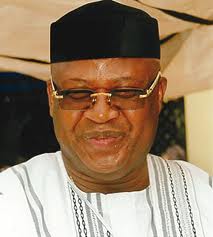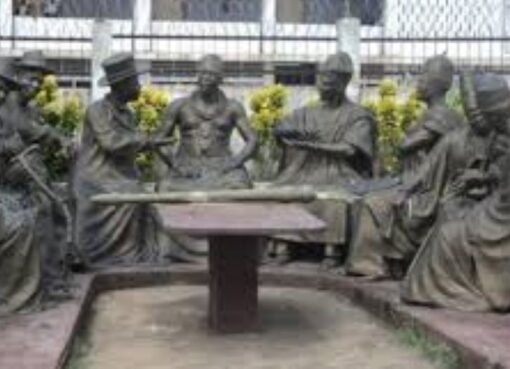• Space programme gulps N101.744 billion in three years with little progress
• NARSDA received N6.166bn in 2021 while 14 supporting mini agencies gulped N15bn same year
• FG increased NASRDA budget by over 450 per cent in 2022 but over 70 per cent spent on salaries
Despite gulping N101.744 billion in three years (2021 to 2023), the country’s space programme has failed to send an unmanned mission to space, a target it set for itself by 2022, with indications that it may also miss the plan of sending manned mission to space by 2030.
Further breakdown indicates that the Nigeria Space Programme has failed to meet over 70 per cent of its mission and vision. The programme has also failed to launch satellites into space as promised by the Federal Ministry of Science, Technology and Innovation (FMSTI) and the National Space Research and Development Agency (NASRDA).
NASRDA’s mandate, as an agency under FMSTI, is to vigorously pursue the attainment of space capabilities as an essential tool for the socio-economic development and the enhancement of the quality of life of Nigerians.
Former Minister of Science, Technology and Innovation, Ogbonnaya Onu, had famously promised Nigerians in 2016 that Nigeria would have an astronaut in space on or before 2030, a mission that is bound to remain unaccomplished.
The Guardian investigation showed that more than 60 per cent of the yearly budget for NARSDA and its affiliate agencies are used for paying salaries with little or nothing left for capital projects. Figures from the Budget Office showed that after a special intervention in 2021 by former President, Muhammadu Buhari, the budget for NARSDA increased by 450 per cent in one year.
A breakdown showed that there was a 450 per cent increase in the approved budget for NASRDA from total allocation of N6,166,477,307 in 2021 to N27,881,134,480 in 2022. Expectedly, a large chunk of the budget went for payment of salaries. Of the N6.166 billion in 2021, N3.798 billion was for personnel, N185.420 million for overhead and only N2.182 billion for capital projects.
The situation is even worse in 2022 where over 70 per cent of the N27.881 billion approved for NASRDA was for personnel (N19.809 billion) and overhead (N486.671 million). The capital budget, N7.584 billion, was not up to 30 per cent of the entire budget for NASRDA.
A further breakdown showed that there are at least 14 other mini-agencies created to support Nigeria’s space dream that gulped over N20 billion in 2021 that N14 billion higher than the N6.166 billion that NASRDA got.
A breakdown of the mini-agencies and how much was approved for them according to the Budget Office of the Federation showed: Advanced Space Technology Application Laboratory Uyo, Akwa Ibom State – N1,116,081,752; Centre for Geodesy and Geodynamics, Toro Bauchi – N1,402,684,355; African Regional Centre for Space Education Ile Ife, Osun State – N997,766,721; Centre for Space Transport Propulsion Epe, Lagos – N2,043,664,976; Centre for Basic Space Science Nsukka, Enugu State – N1,954,550,698; National Centre for Remote Sensing Jos, Plateau State – N2,632,077,830; Zonal Advanced Technology Laboratory Kano – N398,659,596; and Advanced Aircraft Engineering Laboratory Gusau, Zamfara State – N368,374,591.
Others are: Advanced Aerospace Engine Laboratory Oka, Ondo State – N444,722,273; Advanced Unmanned Aerial Laboratory Uburu, Ebonyi State – N742,645,567; NASRDA Institute of Space Science and Engineering Abuja – N542,247,723; Zonal Advanced Space Technology Application Kashere, Gombe State – N380,555,070; Zonal Advanced Space Technology Application Ikwo, Ebonyi State – N71,425,001; and Zonal Advanced Space Technology Application Langtang, Plateau State – N378,925,419.
However, there is a drop in total allocation to NASRDA in 2023 approved budget from N27.881 billion in 2022 to N22.697 billion. Interestingly over 90 per cent of the budget this year is for paying salaries (personnel), which is N19.959 billion, while a paltry N1.619 billion is for capital and N1.118 billion is for overhead.
The Guardian investigation revealed that the 450 per cent increase in the approved budget for NASRDA from total allocation of N6,166,477,307 in 2021 to N27,881,134,480 in 2022 was as a result of the promise of former President Buhari on June 24, 2021, to NASRDA.
Presiding over the National Space Council (NSC) meeting at the statehouse in Abuja, Buhari had explained that the development of Space Science and Technology, particularly the launch of earth observation, communication and navigation satellites, remains the core mandate of the nation’s premier space agency.
NASRDA has, over the years, shown a pivotal role in its deployment of expertise in the design, building and launch of Nigerian satellites. These include NigeriaSat -1, NigeriaSat–2, NigComSat-1R and most importantly, the NigeriaSat-X, which was designed and built to flight standard by Nigerian engineers and scientists.
Several researches have shown that space technology provides a new frontier for human development as a stimulant for increased technological advancement and economic innovation, which offers a unique platform for effective exploration and exploitation of natural resources and the protection of our environment.
It is believed that the space sector is the foundation for cybersecurity and a vibrant digital economy that is at the forefront of progress and development across the globe.
As a result of the president’s mandate, the immediate past Minister of Science and Technology, Onu, also prepared a revised 25-year roadmap for the implementation of the National Space Policy, which was approved by the Federal Executive Council.
Indeed, compared to most middle-income countries, African countries have slightly lower budgets to drive space exploits. A perfect case in point is South Africa’s $168 million space budget for 2020 (which was the highest in Africa for 2020), versus the $1.89 billion allocation by India. As a matter of fact, the latter figure nearly doubled the total allocation ($534.9 million) by the entire African space programmes combined in 2022. These financial provisions still remain relatively low compared to space-dominant forces such as the U.S. National Aerospace Agency (NASA) and the European Space Agency (ESA).
In 2022, the budgetary resources available to NASA was $29.20 billion, while the Japan Aerospace Agency (JAXA) had a budget of $1.12 billion – a mammoth figure compared to the highest budgetary value ever provided by South Africa and the entire African continent.
Recent advancements in space exploration, for the most part, can be credited to only a small number of countries, even among the industrialised nations. The United States, Canada, Russia, Japan, and 11 other European countries under the European Space Agency (ESA), remain the most dominant contributors to the International Space Station (ISS) since its debut in 1999.
One cannot deny the colossal financial muscle required to venture into any meaningful exploration of space – which to a great extent accounts for why most developing nations are still lagging in this. That notwithstanding, the space race has stimulated great interest in developing nations as well, leading to several noteworthy exploits from such countries.
For instance, trailing behind the world powers is the Indian federation, which had the fourth-highest space budget in 2013, injecting $4.267 billion, behind only the USA, China, and Russia.
Indeed, Nigeria’s dream to launch into space by 2030 does not look any closer to reality. As of 2021, 44 satellites had been launched by 14 African countries, including Nigeria, but none had been done from an African launch site.
Former President, Olusegun Obasanjo, in February 2023, blamed government’s policy somersault in the last 15 years for Nigeria’s inability to produce its own satellite. Obasanjo stated that without committed efforts and a custom blueprint, advancement in the country’s technological drive would continue to be a mirage.
Speaking at a meeting with the management of Algorism Limited in his residence, Obasanjo recalled how his administration, between 1999 and 2007, worked towards gathering scores of local engineers to build a satellite. He disclosed that the then government got the Chinese to train 120 Nigerians on how to build satellites after an agreement.
The plan was China would build the first satellite, build the second, while tutoring Nigerians who would later build the third, Obasanjo said. “But the 120 Nigerians are nowhere to be found again; incidentally, they are not dead,” he told his guests.
“The government that came after us could not understand and that is part of the misfortune of Nigeria. I met the Nigerians when I later went to China,” he said.
Senator Shehu Sani had, on April 10, 2023, said: “Last year, N2.5 billion was budgeted by the Federal Government for launching Satellites to space; by now it is either the Satellite or the money must have reached the Space of Jupiter, Mars or Venus.”
Indeed, Nigeria had ambitious goals for its future in space. Investing in space technology could have a significant impact on the socioeconomic development of Nigeria. However, experts insist there are significant political, social, technical, and economic challenges that will need to be overcome if Nigeria is to develop a thriving space programme.
A space engineer, Prof. Spencer Onuh, said the Nigerian space programmes need to engage relevant stakeholders to harness the benefits in space science technology. Onuh said people that constituted the informal sector like farmers and entrepreneurs can be trained on how to use information from space.
“Many people just know that I can use my Automated Teller Machine, my mobile phone but farmers, fishermen, town planners can use the space programme as well. They are not really aware of how they can get this information for what they do and apply it to improve their businesses and entrepreneurship ventures.
“There are organs of government in places like the National Orientation Agency (NOA) that can pass this information, these people can be reached through their leaders, unions,’’ he said.
Onuh said that considering the challenges facing the country and being as an African country covered in clouds, a Synthetic Radar Aperture satellite was suitable for Nigeria.
In May 1999, the NASRDA was born following the recommendation of a nine-person committee of experts constituted by the National Agency for Science and Engineering Infrastructure (NASENI).
Currently, Nigeria’s space programme is managed by NASRDA. And in 2000, the National Space Policy (NSP) was approved, and a 25-year roadmap for its implementation was endorsed in 2005.
In 2006, the state-owned Nigerian Communications Satellite (NIGCOMSAT) Limited was formed to manage and operate Nigeria’s communication satellites under the Ministry of Communication and Digital Economy.
In its 15 years of existence, the company, a limited liability enterprise that is yet to turn any profit, does not have an establishing Act and has been the subject of controversy after recently claiming it would acquire two new satellites in 2023 and 2025.
It also has a subsidiary, GeoApps Plus Limited, which is expected to handle the sale of satellite images acquired by Nigeria’s earth observation satellites. According to its Facebook page, it provides training in Geographic Information System and Remote Sensing for Ministries, Departments, and Agencies (MDAs), and the military, among others.
In 2017, after the Defence Space Administration Act was passed into law, and following the suggestions of the NSP, the Defence Space Administration (DSA) was officially commissioned to acquire more space science technologies to aid the military.
Formerly known as the Defence Space Agency, the DSA was first established on October 9, 2014, and is currently training several engineers in partnership with NIGCOMSAT and NASRDA.
The NSP is a ten-chapter document outlining several objectives like defence and law enforcement, disaster prediction, earth observation, poverty alleviation, promotion of international cooperation, and the establishment of research centres.
It also provides Nigeria’s space economic model, a public-private partnership that involves short, medium, and long-term plans. Short-term, the government is responsible for all investments in space technology development. Medium-term, the government implements the partial commercialisation of NASRDA’s products and services developed during the short-term economic development plan.
Long-term, the government partners with the private sector to implement the public-private partnership framework for the space programme. To achieve this, the roadmap contains benchmarks: Launch of NigeriaSat-1 by 2002; training of Nigerian engineers to build earth observation (EO) satellites abroad by 2006; launch of two new satellites by 2011; training of Nigerian astronauts by 2015; Synthetic Aperture Radar by 2015; Development and Building of Made in Nigeria Satellites by 2018; Development of Rocketry/Propulsion Systems by 2025; Development of Spin-Off of Allied Industries – Electronics, Software etc. by 2028; and large-scale commercialisation of Space Technology and know-how by 2030.
As far as implementation goes, Nigeria has had some success with NigeriaSat-1. NASRDA has also facilitated the training of engineers in building EO satellites, with the NigeriaSat-X solely built by Nigerians, alongside the Nigeria-Sat-2 launched by the SSTL in 2011.
The NigeriaSat-1 and NigeriaSat-X had a lifespan of seven years and should have been deorbited in 2018. In 2017, the EduSat-1, a collaboration between the Federal University of Technology Akure (FUTA), Ondo State, Nigeria, and NASRDA, was built by Nigerians and launched from NASA’s Kennedy Space Center, but was decommissioned in 2019. As of 2019, the Centre for Space Transport and Propulsion (CSTP), Epe, Lagos State, had completed three successful experimental rocket launches.
THEGUARDIAN






